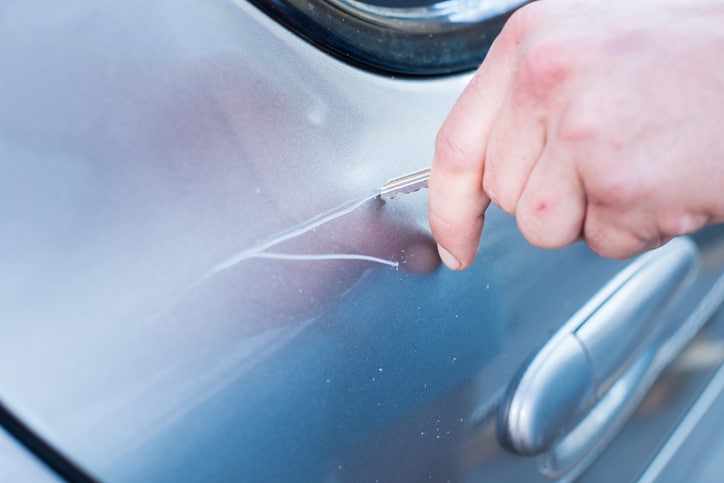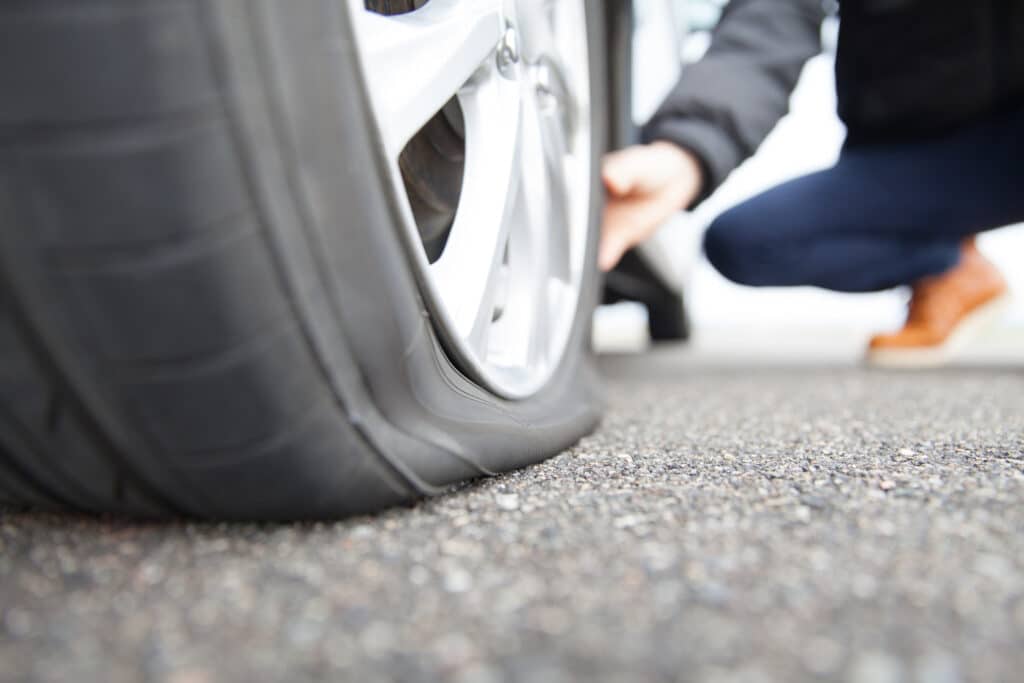Fallen victim to car vandalism? Returning to your car to find a broken window or a slashed tyre is any car owner’s nightmare, but sadly it’s a reality thousands of motorists will face every year.
Car vandalism is a deliberate act of property damage. It can be frustrating, infuriating, and –most importantly for some – very costly. It can be difficult to know what to do first and whether you’ll need to shell out for the repairs.
Knowing which steps to take isn’t always clear-cut if you discover your car has been vandalised. Here, we’ll go through the different situations, what you should do and who you need to contact. We’ll also throw in a few tips to help you try to avoid this position in the first place.
Quick links
- What Should I Do if My Car is Vandalised?
- Is vandalising a car a crime?
- Should I report car vandalism to the police?
- What is vandalism repair promise?
- Should my car insurance cover vandalism?
- How can I avoid car vandalism?
What Should I Do if My Car is Vandalised?
In a high-stress situation like this, it’s easy to get swept up by questions you have. You’ll be thinking about everything from who did it to what the repairs could cost.
Having a clear idea of the steps to take is important, especially when you have so much to think about.
The first thing to remember is that you shouldn’t disturb any of the evidence. Try not to touch anything or clean up – your car is a crime scene and should be left exactly as it is.
The next thing to do is take photos of the damage. You’ll need these as evidence if you contact the police or your car insurance company, which we’ll get into later.
Is Vandalising a Car a Crime?
Vandalism and accidental damage are treated very differently by both insurers and the police. An accident can usually be handled by the people involved and might require the involvement of insurers. However, vandalism is a crime that requires getting the authorities involved, as well as your insurance company if you plan to make a claim.
So, what constitutes vandalism, and what does accidental damage look like in comparison?
Vandalism
Typical signs of vandalism can include:
- Slashed tyres
- Scratches – usually from a key, but other objects could be used
- Smashed windows or wing mirrors
- Graffiti
- Damage to the interior after a person has forced entry
- Other damage deliberately inflicted on any part of your car
Accidental Damage
Accidental damage is just that – an accident.
People are usually willing to own up to accidental damage and swap insurance details with you. Whether they dented your door when they opened theirs or bumped the side of your car while exiting the car park, it won’t have been a purposeful or malicious attack on your property.
It’s usually easy to spot when damage is caused by an accident or is deliberate, but remember these points when assessing any damage you find on your car.
Should I Report Car Vandalism to the Police?
As long as you aren’t in immediate danger, you should contact 101 – the non-emergency line – to report vehicle damage to the police.
Vandalism should always be reported since damaging public or personal property is a criminal offence. The more people that report it, the less chance it will happen again – especially if it’s becoming a problem in your local area.
What is a ‘Vandalism Repair Promise’?
Some insurers offer a ‘Vandalism Repair Promise’ which means they’ll cover the cost of repairs if your car is vandalised. Some might even protect your no-claims bonus from being affected.
Check your insurance policy to see if you’re covered for these as only certain insurers and policies will include it.
Should My Car Insurance Cover Vandalism?
You’ll be able to claim for malicious damage if your policy is fully Comprehensive, but Theft, Fire and Third Party (TFTP) policies don’t usually cover it.
The bad news is that your no-claims bonus could be affected, alongside your future premiums if a vandalism repair promise isn’t included in your policy.
Contacting your insurance about the vandalism isn’t necessary if you want to protect your no-claims bonus and avoid a hike on your premium, but this might mean that you bear the full cost of the repairs.
How Can I Avoid Car Vandalism?
While avoiding it might not always be possible, there are a few ways you can reduce the risk of your car being vandalised.
Here are a few of our tips:
- Park in safe places– Car parks and garages with CCTV or security can deter criminals from vandalism in the first instance.
- Never leave valuables on show– Always take valuables with you when you leave your car and ensure any in-car gadgets are stored safely in the glovebox or concealed compartments. If a would-be thief tries and fails to enter your vehicle, there’s a chance they could damage it anyway out of frustration – so don’t give them an excuse.
- Park in a garage or drive– A garage is one of the safest places you can store your car to avoid vandalism and theft. If this isn’t an option, try to park in front of your house or on the drive. Adding a wireless security camera to the front of your property is a good way to deter potential criminals from interfering with your car.
- Try not to block people in or park too close to other vehicles – We’ve all accidentally parked in front of a drive or ended up a little too close to somebody’s car. Try to keep your distance and be mindful of your surroundings since you never know whose car you could be in the way of.
- Avoid road rage– Vandalism can often be a revenge response after an altercation with other road users, so if you can avoid getting into these situations in the first place, you’re less likely to be a victim of it.
Want to know more about how to protect your car when you park it? Read our blog about the places and scenarios where it would be wise to think twice about leaving your car.
We hope this guide helps in the unfortunate event that your car is vandalised. For more information and our full product range, visit the homepage.



